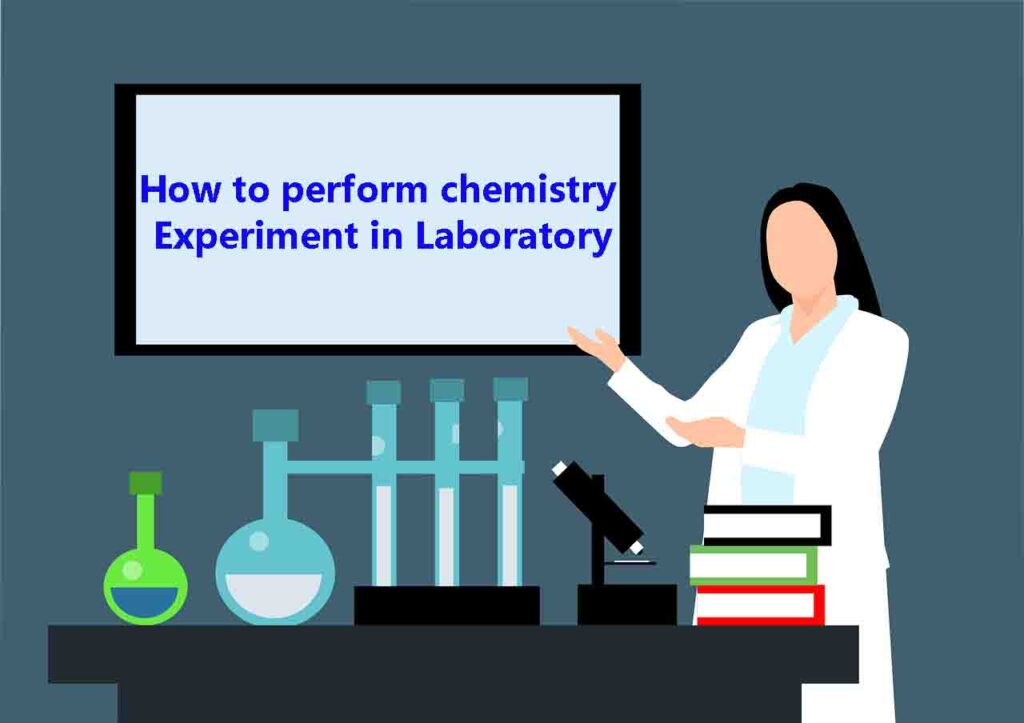Written by Adeel Abbas
What is a lab experiment?
Table of Contents
An experiment is a scientific investigation carried out to support, refute or validate a hypothesis. The experiment may collect data that could not be obtained by other means (such as practical experience).
The experiment is an integral part of the training program and laboratory work. The knowledge gained through experiments should be discussed, analyzed, and supplemented by theoretical information.

The need for training experiments in chemistry arises because they are designed to show students how to perform a certain task, as well as how to solve problems arising during their execution, using scientific research methods.
A lab experiment is an experiment carried out in a laboratory under controlled conditions, as opposed to an outdoor experiment or field test. It is typically performed using specialized equipment not found in a normal laboratory, such as power supplies, vacuum pumps, and high-voltage apparatus.
Related: 11 good laboratory practices for a chemistry student
5 Steps on How to perform an experiment in chemistry lab
It is a well-known fact that experiments are the most important part of any chemistry course. Students need to conduct experiments to gain practical knowledge on how novel chemical reactions take place in the lab. Conducting experiments in a chemistry lab is not an easy task and students need to perform the experiment carefully. Below are certain steps that students can follow to perform an experiment successfully:
1. Write a Hypothesis
Write a hypothesis on what you want to observe and prove in the experiment that you are going to do. This will help you observe the nature of the experiment.
2. Prepare the lab instrument or apparatus needed for the experiment.
You will need to prepare the lab instruments or apparatus needed for the experiment. Some of the lab equipment that you need to prepare are:
- 1. Thermometer
- 2. Distilled Water Container
- 3. Erlenmeyer Flask
- 4. Bunsen Burner
- 5. Test Tubes
- 6. Stirring Rod
- 7. Stop-watch (optional)
- 8 . Safety Goggles (optional)
- 9 . Normal Lab Clothes
3. Prepare the chemicals needed for the experiment, and label them properly.
Proper laboratory safety is essential for the successful completion of every experiment. Before you begin, you will need to prepare a few chemicals for the experiment, and properly label them. It is important not to confuse these chemicals. Laboratory chemicals are often dangerous if not handled properly. They should never be used by anyone other than the person who prepared them, or someone else authorized to use them (for example, another member of your lab group).
4. Do your experiment, and write down your observations after each step of the process.
The final step of the scientific method is to make observations and record them. This is what makes a hypothesis into a theory.
You can write down your observations in any order, but it’s best to do it as you go along. If you do this, then you will also have more data to support your final conclusion.
5. Analyze your data and summarize it in a table or chart, then draw a conclusion that correlates with your hypothesis.
Go back to your testing spreadsheet and fill in the last column, titled “Data Analysis.” This is where you will use the data you have collected throughout your tests to draw a conclusion that supports or refutes your hypothesis. Here, you can also utilize charts or tables to show your results.
Conclusion
Conducting experiments in chemistry is a great way to learn. However, you also need to be careful and double-check that everything has been done correctly. If you’d like some help with your experiment or want to discuss the results you’ve got so far, we would love for you to comment on our post today!